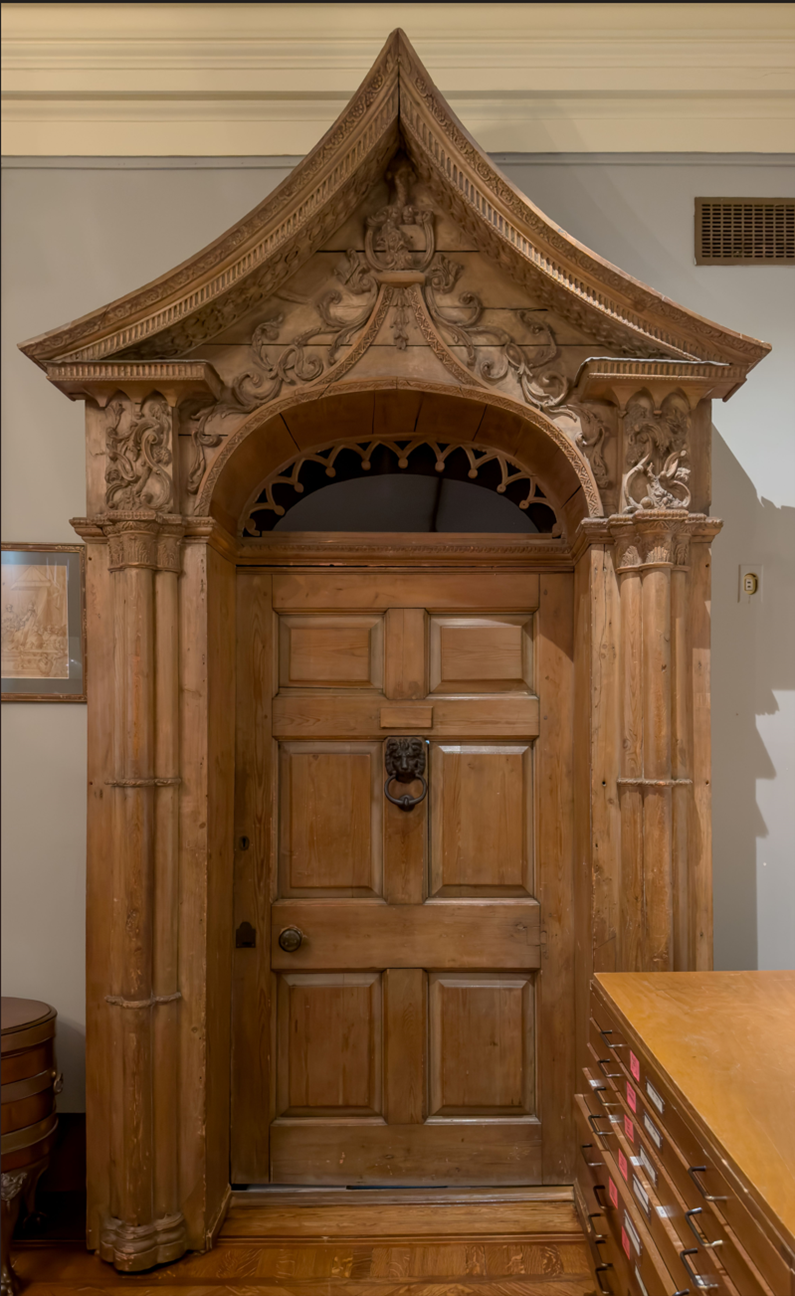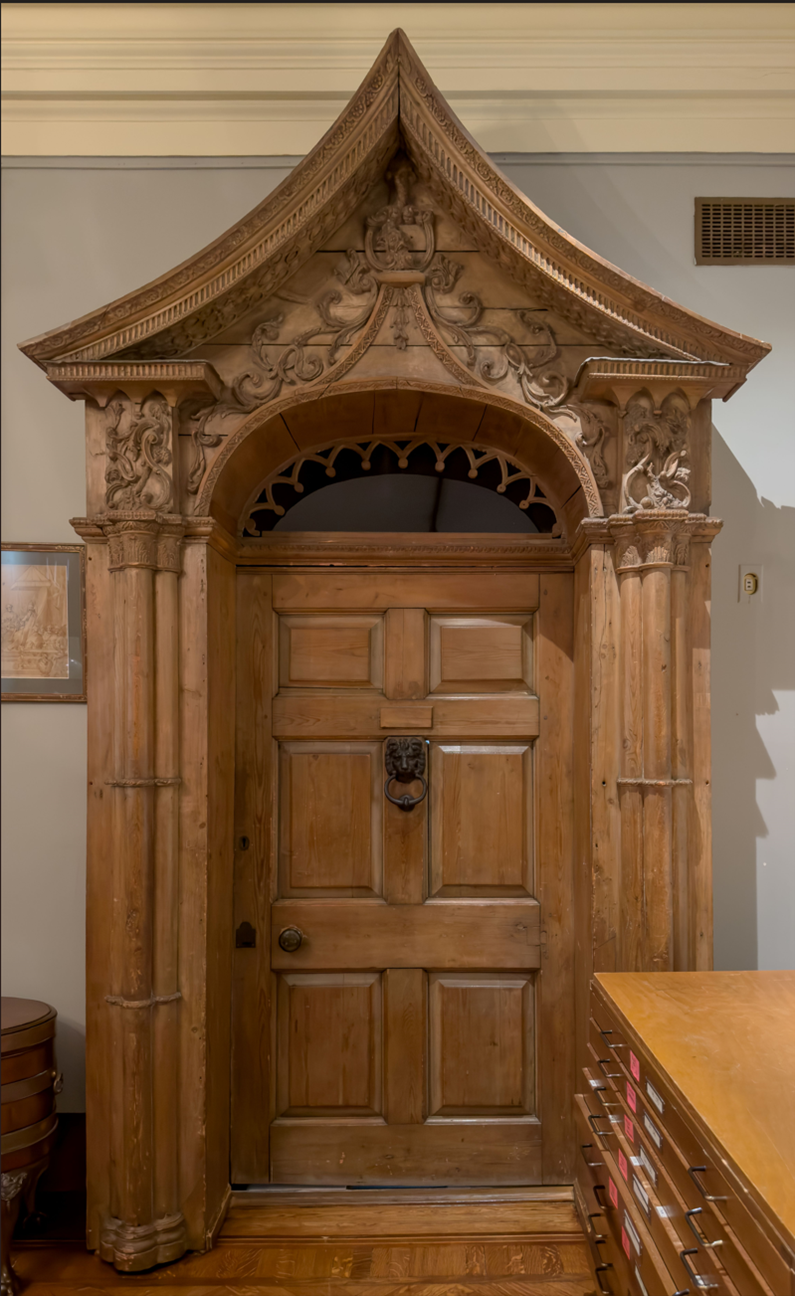A George III Sino-“Gothick” door surround. Ca. 1760
A George III Sino-“Gothick” door surround. Ca. 1760
Couldn't load pickup availability
George III Sino-“Gothick” door surround. Ca. 1760. Installed on the west wall of the dining room.
Surround: 10’ 9” x 6’ 2”; door (later): 6’ 5” x 3’ 5 ½”.
The arc of Georgian architecture is largely modes of neoclassicism. The vocabulary of Roman (and, increasingly, Greek) architecture was filtered through various vernaculars until it settled in its own particularly British forms. There was, however, a series of counter-movements that ultimately found their flowering in the XIXc. The early forms, of which the present door surround is a rare and beguiling example, reflect a wide range of influences.
In 1749 — the heart of the Georgian era — Walpole’s Strawberry Hill House set off a new phase of Gothic architecture in the UK Georgian Gothic (spelled “Gothick” rather pejoratively by the Victorians, a sticky moniker) went through various phases; the present item fits well into Kenneth Clark’s “Rococo Gothic” — a term banished for a while but now resurgent thanks to Lindfield’s 2016 monograph on the subject.
The style is in stark contrast to the English Palladianism, whose great exponent had been Inigo Jones (1573–1652). A century after his death, architects had come to be frustrated with the restrictions of Classical proportions, and looked instead to Medieval examples — a sort of architectural pre-Raphaelitism — and to examples from Asia. Thus in the present door surround can be seen elements of an almost Lombard medievalism in the entablature, and a clear reference to the concave roof of a pagoda in the split cornice (compare the 1761 Great Pagoda at Kew).
The combination of chinoiserie and gothic ornament was codified by William and John Halfpenny in their Chinese and Gothic Architecture Properly Ornamented (London: Robert Sayer, 1752), although their work depicts only external elements.
The Art Institute of Chicago acquired the door in 1932. Sold by the order of their Board at Sotheby’s New York 18 October 1997 (lot 386), where it was acquired.


